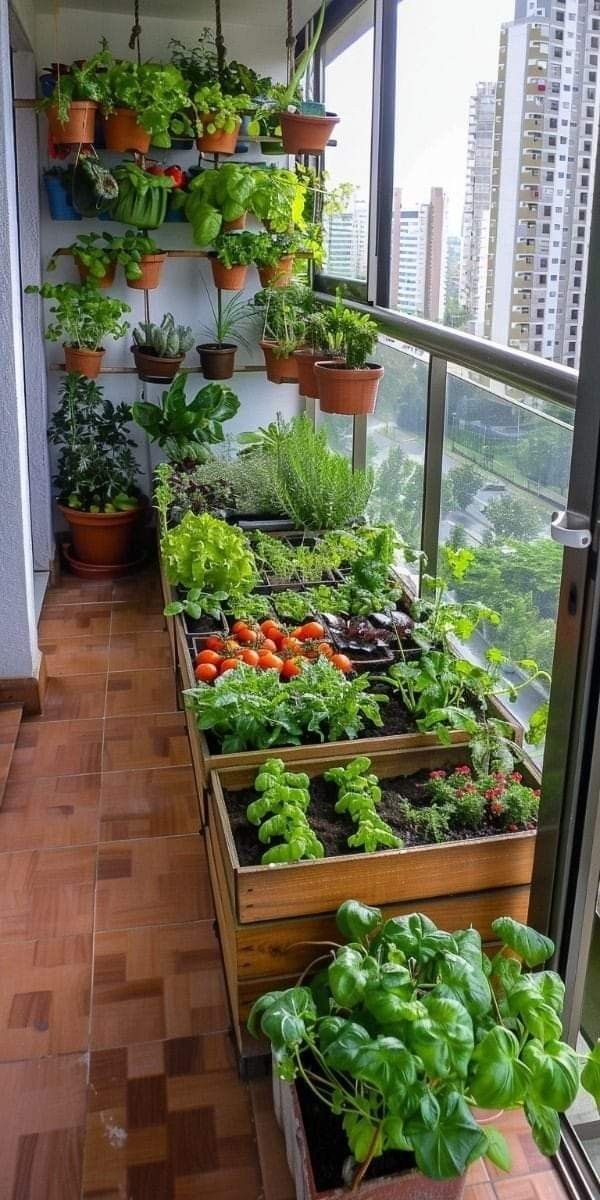

How to Grow and Care for My Own Medicinal Herb Garden **Day 7**
Praise Chukwuegu@praisechukwuegu960554
1 year ago
Medicinal herbs have been used for centuries to promote health and wellness. Growing these herbs in your own garden is a rewarding way to ensure you have access to natural remedies at your fingertips. Not only does it provide fresh, organic ingredients for homemade treatments, but it also connects you to nature and fosters a sense of self-reliance.
The first step in creating a medicinal herb garden is careful planning. Selecting the right location is crucial. Most herbs thrive in areas that receive 6-8 hours of sunlight daily, so choosing a sunny spot is essential. Depending on your living situation, you can opt for an outdoor garden or grow herbs indoors using pots near a bright window.
Deciding which herbs to grow is another important consideration. Some beginner-friendly options include mint for digestive health, basil for its antibacterial properties, chamomile for relaxation, aloe vera for soothing burns, and lavender for its calming effects. Once you’ve chosen your herbs, plan your garden layout. You can plant them directly in the ground or use containers. Grouping herbs with similar water and sunlight requirements will ensure they thrive together.
Preparing the soil is the foundation of a healthy herb garden. Most medicinal herbs prefer well-draining, nutrient-rich soil. If the soil in your area is compact or lacks nutrients, enhance it by mixing in compost or organic fertilizers. Additionally, test the soil's pH levels—most herbs grow best in slightly acidic to neutral soil with a pH of 6.0 to 7.5. By taking these steps, you create an optimal environment for your plants to flourish.
Once the soil is ready, it’s time to plant the herbs. If you are using seeds, sow them at the appropriate depth as indicated on the seed packet. For seedlings, dig holes large enough to accommodate the roots without crowding. Proper spacing between plants is important to allow for air circulation and prevent overcrowding.
Watering is another key aspect of planting. While herbs like basil need consistent moisture, others like lavender prefer drier conditions. Be sure to research the watering needs of each herb and adjust accordingly. Overwatering can lead to root rot, while under-watering may stunt growth.
Caring for a medicinal herb garden involves regular maintenance. Pruning is essential to encourage growth and prevent plants from becoming overgrown. For example, pinching off the tops of basil plants promotes bushier growth. Additionally, harvesting herbs regularly helps them stay productive.
Organic pest control is another consideration. Use natural methods like neem oil or companion planting to deter pests without harming the environment. Seasonal care is also vital; during extreme weather conditions, protect your herbs by bringing pots indoors or covering outdoor plants with frost cloths.
Once your herbs are ready for harvest, it’s time to put them to use. Harvest leaves, flowers, or roots depending on the herb and its intended purpose. For example, chamomile flowers are best picked when fully open, while aloe vera leaves can be harvested as needed.
To ensure year-round availability, preserve your herbs by drying, freezing, or creating tinctures and oils. For instance, dried lavender can be used in teas, while aloe vera gel can be stored for skin treatments. Medicinal herbs offer versatile uses, from soothing teas to healing balms, making them a valuable addition to any home.
Growing and caring for a medicinal herb garden is a fulfilling endeavor that offers numerous health and lifestyle benefits. From planning and planting to harvesting and preserving, each step connects you to the healing power of nature. By cultivating your own garden, you gain access to fresh, organic remedies while enjoying the satisfaction of nurturing plants. With patience and care, your medicinal herb garden can become a source of healing and joy for years to come.
#WellnessArt
#LostBeautyArts
#HelloNircle
#NircleFeeds
#NircleHowTo
#MyNircleFeeds
Photo credits: Pinterest
📍Owerri Municipal, Nigeria

